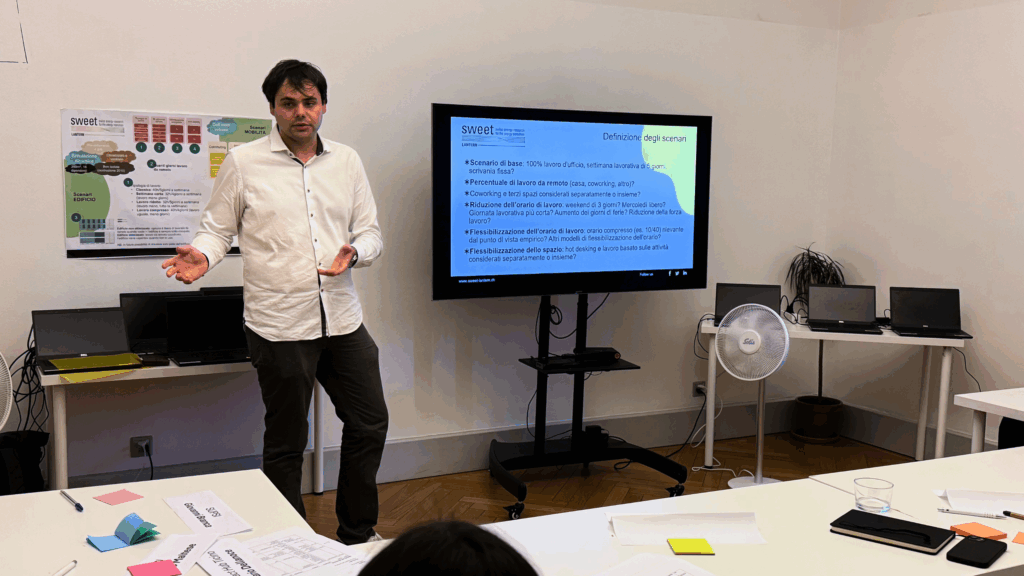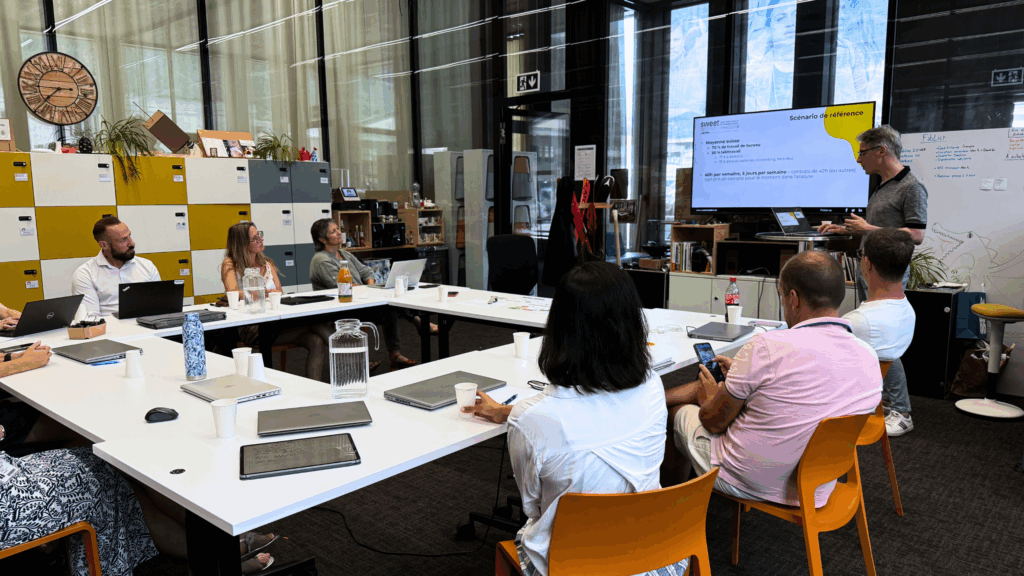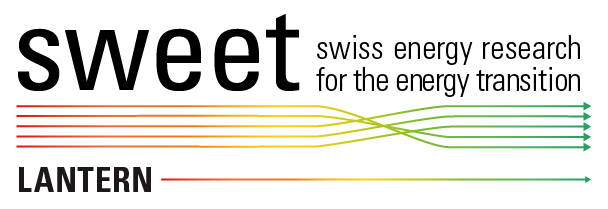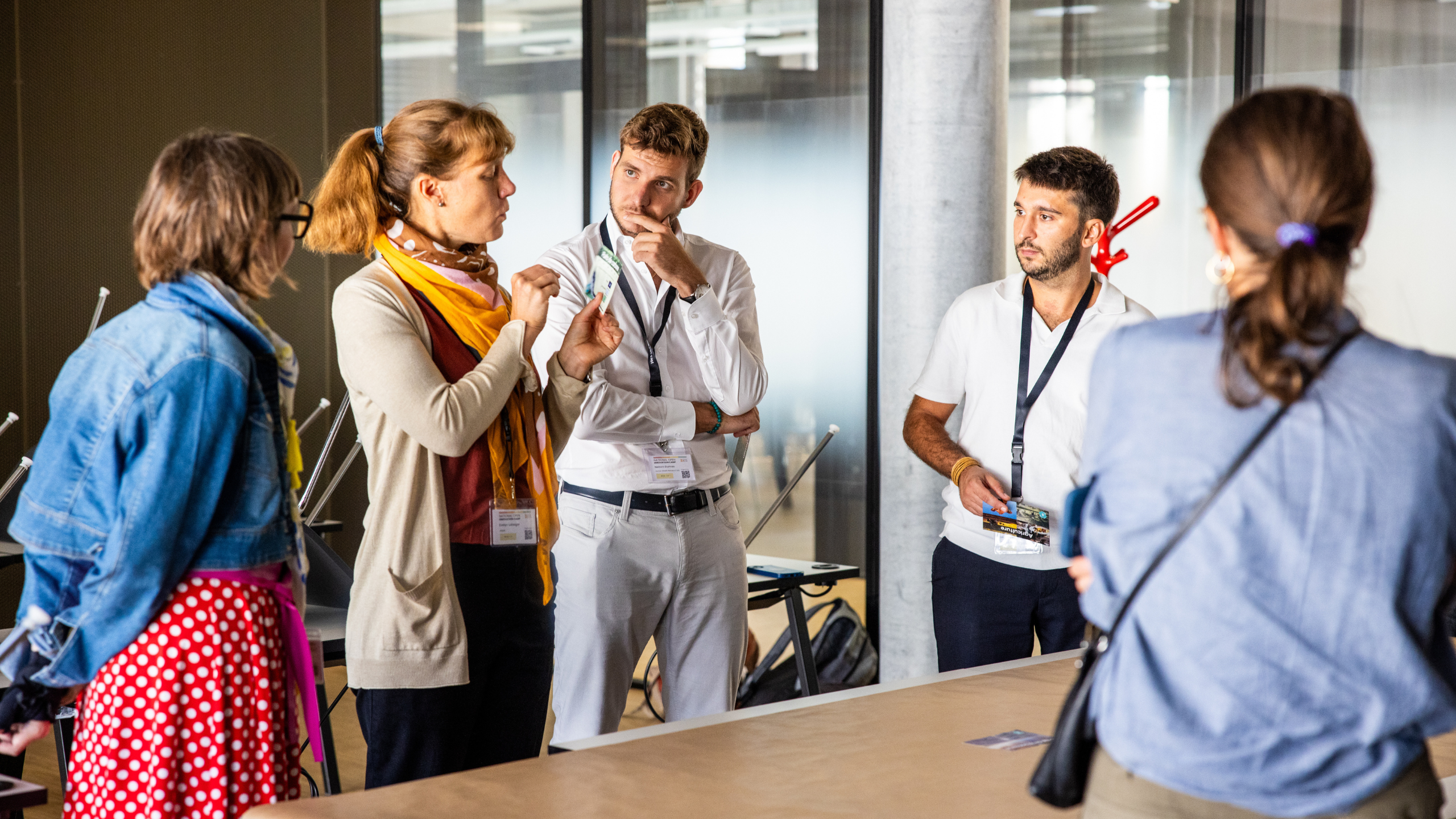Insights from the workshops with practitioners
As part of the SWEET Lantern project, a serie of three regional workshops was held to engage with stakeholders on the future of work and its energy implications and test the prototype of a simulation tool. These workshops took place in Lugano, Zurich, and Sion, bringing together participants from diverse sectors including public administration, academia and private industry. The workshops provided an opportunity to co-create knowledge and gather feedback on how different working models affect energy use, space management, and employee well-being.
First stop in Lugano
Our journey began in the Italian-speaking region at SUPSI, the workshop gathered participants from universities, living labs, the public sector, and large companies. Discussions focused on the opportunities and challenges linked to transforming workspaces and adopting flexible work practices.
Participants shared strategies for redesigning office environments to support collaboration and hybrid work. Topics included managing virtual teams, knowledge exchange, and integrating HR and facility management needs. The importance of inclusive design and legal frameworks also emerged.


Heading north to Zurich
The Zurich workshop, co-moderated by ZHAW, brought together participants from facility management, insurance, and academic institutions. The discussions focused on how to optimize energy use in office buildings.
Participants identified occupancy peaks as a challenge and discussed strategies to balance energy loads. Turning off heating on low-occupancy days was seen as a viable option, depending on the building’s technical systems. Food service operations were also mentioned as a potential area for energy savings. The choice of rental properties emerged as another key topic, with participants favoring spaces that are adaptable and energy-efficient.
Final destination between the mountains
In Sion, the workshop brought together stakeholders from sectors including logistics, health insurance, manufacturing, and higher education. Feedback on the simulation tool led to lively exchanges. Participants stressed the importance of distinguishing between fully and semi-flexible roles, especially in customer-facing environments. Legal constraints (e.g. working hour protections) were highlighted in relation to compressed work schedules. Some organizations cited challenges in extending remote work to cross-border workers or teams requiring regular coordination. Hotdesking and desk-sharing models were discussed as practical responses to space constraints. Across the board, stakeholders emphasized the value of anticipating energy implications during early planning phases (e.g. building design, leasing decisions).


Next steps and tool development
Across all three regions, the workshops validated the relevance of the simulation tool. Stakeholders appreciated its ability to visualize and compare organizational scenarios, quantify energy impacts, and identify trade-offs between flexibility, operational needs, and sustainability goals. The feedback collected is now being integrated into the tool’s next iteration. Overall, participants appreciated the simulation tool for its practical value in supporting day-to-day decisions and long-term scenario planning
We are currently looking for partners interested in testing or co-developing the tool, or simply sharing their experiences. Any organization curious about understanding the energy impact of its HR choices is welcome to join us.

